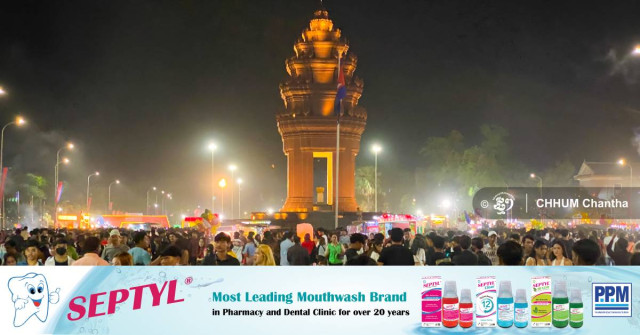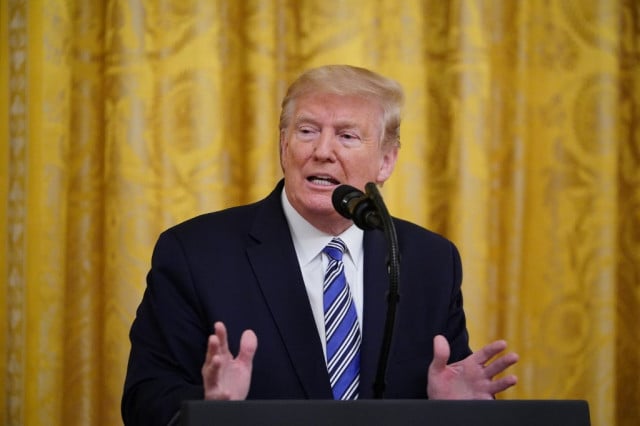The Bakheng: Diving into the History of Cambodia’s Pyramid
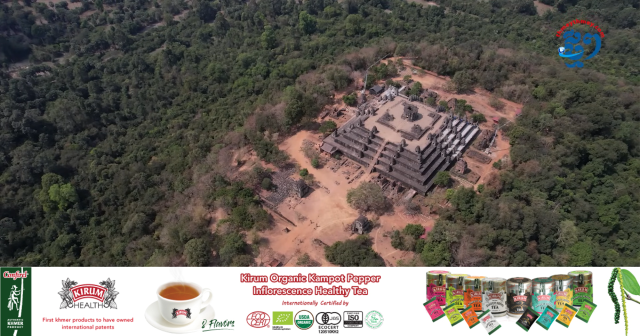
- By Sem Vanna
- April 14, 2024 12:00 PM
SIEM REAP — Resting on a mountain bedrock for more than a thousand years, the Bakheng temple exhibits design that sets it apart from other temples in Cambodia. With a multi-tiered structure incorporating more than 100 towers, the Bakheng was once the center of a city to which gravitated the region.
Today, the Bakheng attracts visitors because of the scenic view it provides due to its location on a hill, which enables visitors to watch beautiful sunsets and get a glimpse of the other monuments close by.
_1712990605.png)
Situated about 1.5 kilometers from the Angkor Wat temple in the Angkor Archeological Park, and nearly 8 kilometers from the center of Siem Reap city, the Bakheng is one of the temples in Cambodia built in a pyramid design, the others including the Bakong in Siem Reap province, and the temple of Prasat Thom in Koh Ker—the empire’s capital in the early 10th century in today’s southwest part of the country.
_1712990704.png)
Chea Sarith, an archaeologist with the APSARA National Authority—the Cambodian government body managing Angkor Park—on Feb. 27 explained the history and transformation of the Bakheng temple over the centuries.
_1712990749.png)
Caption: Chea Sarith, an archaeologist with the APSARA National Authority, during an interview with ThmeyThmey Digital Media. Photo: Lay Long
_1712994539.png)
Sem Vanna: What led to the Bakheng becoming one of the central elements of this empire’s capital?
Chea Sarith: To begin with, let me briefly introduce King Yasovarman I who reigned from 889 to 910 and whose reign first materialized at this city of Hariharalaya in today’s Roluos region [today around 12 kilometers east of Siem Reap city].
During his time, the king constructed a large water reservoir (baray) called Yasotataka to accommodate the water flowing from the Roluos and Siem Reap rivers, and a canal connecting these rivers to better supply another nearby reservoir called Jayatataka.
King Yasovarman I also built the Lolei, a temple set in the middle of the Indratataka water reservoir to honor his ancestors.
_1712990839.png)
Caption: Lolei temple set in the middle of the dried-out Indratataka water reservoir. Photo: Sem Vanna
He then moved his capital city from Hariharalaya to Yasodharapura [in today’s Angkor Archeological Park] where the mountain temple of Bakheng became the center point.
Yasodharapura used to be enclosed by a square wall that was 4-kilometre long on each side and was built along a moat of the same length. As of today, the northern and the eastern sides have disappeared due to the construction of the Angkor Wat temple to the east and the development of the Angkor Thom city to the north.
_1712990951.png)
Caption: Archaeologist Chea Sarith points out the location of the former enclosed wall of Bakheng. When viewed from the ground during the presence, this section of the wall has become plots of rice paddies grown by local villagers. Photo: Lay Long
The adjacent two sides of the enclosed wall can still be traced. Even though the capital city was moved, we can assume that they were still connected because of an ancient road running diagonally from the Bakheng temple in the northwest of the Roluos region in the southeast.
Inscriptions written during the reign of the previous kings such as Jayavarman II and Jayavarman III indicate that the regions around the enclosed area of the Bakheng temple, such as the Kutisvara temple and Kok Chak temple, were ordered to be settled by populations.
Sem Vanna: There seems to be a huge leap during these times as more and more temples started incorporating a larger number of sandstones during construction unlike the previous temples largely made of bricks.
Chea Sarith: Traditionally, each king was supposed to leave a legacy of two temples, one dedicated to his ancestors, and the other one for himself and dedicated to the deities.
The Bakheng mountain temple was dedicated to Shiva in combination with the two prominent tri-tower mountain temples of Phnom Bok and Phnom Krom during a similar time frame. This answered to the idea of trimurti or the trinity of the supreme divinity in Hinduism.
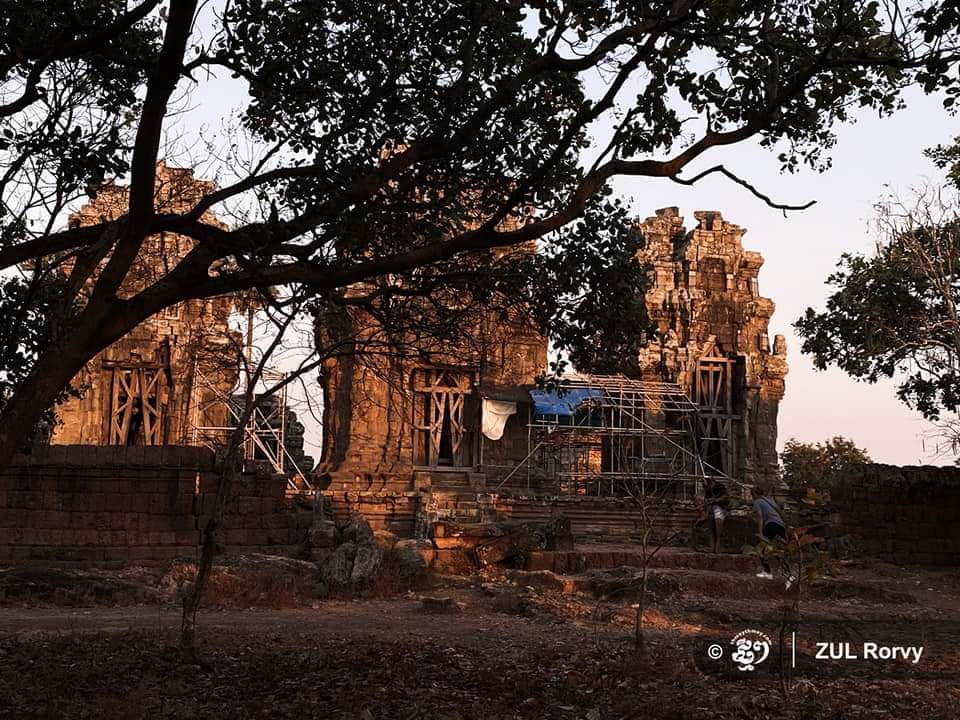
Caption: The mountain temple of Phnom Krom. Photo: Zul Rorvy
Built on top of a modified mountain bedrock and with layers of laterite stones and sandstones, the Bakheng’s aesthetic was inspired by the earlier Bakong temple in Hariharalaya, which is thought to be inspired by an even earlier Ak Yum temple of the 8th century also in the region of Angkor.
Monuments of the pre-Angkorian period were largely composed of bricks with laterite stones forming the foundation and sandstones forming delicate surfaces such as decorated door frames or intricately sculpted lintels. A good example of brick temples would be the 7th century city of Sambor Prei Kuk in Kampong Thom province, which is about 170 kilometers southeast of the Bakheng temple.
During the Angkorian period, a greater number of sandstones were used in the construction of important monuments. However, bricks were still popular for the construction of secondary buildings surrounding the main structures.
_1712991397.png)
At the Bakheng temple, these 44 secondary buildings at the lower level were built of bricks. Furthermore, the five elevated stone tiers, each housing 12 stone towers, flank the top level on all four sides where the top level itself holds the final five towers, four on each side and the biggest one central. In total, this temple has 109 towers—a religiously significant number in Hinduism.
_1712991434.png)
Caption: A cross section diagram of Phnom Bakheng temple. Photo: Lay Long
Although no official records have shown us how long it took to construct this monument, based on inscriptions, we know that the Bakheng temple was inaugurated in 910.
The middle tower was dedicated to Lord Shiva while smaller towers were dedicated to other deities unclear to us at the present time. Most of the time, statues of idols were lost or removed.
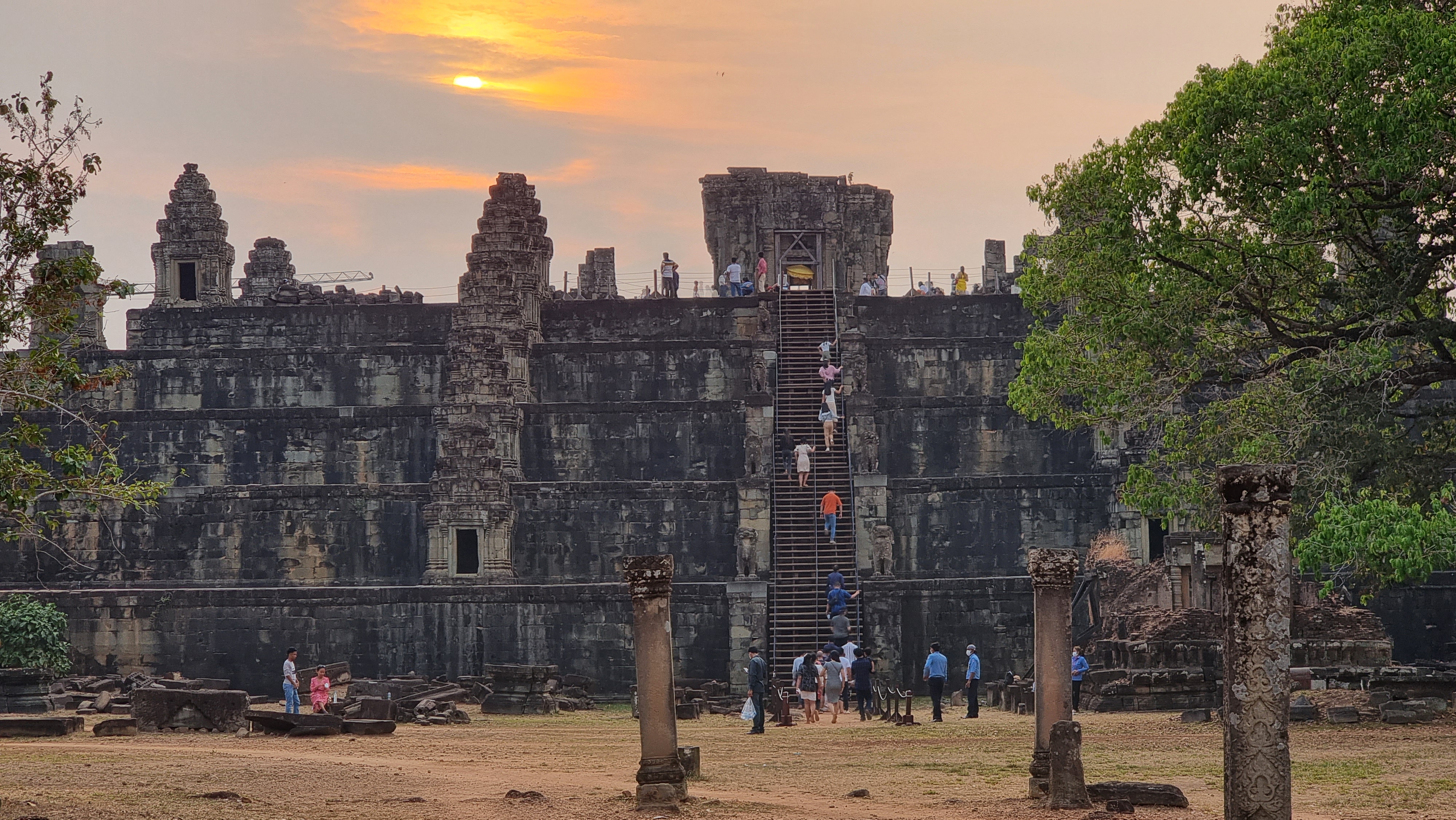
Caption: Tourists climbing up the Bakheng mountain temple to witness the beautiful sunset during the evening hours. The central tower is situated in the middle with its rooftop torn away. Photo: Ky Chamna
Sem Vanna: When was the Bakheng temple transformed into a Buddhist temple?
Chea Sarith: During the 12th or 13th century, there was perhaps a movement to convert Hindu temples, such as the Bakheng, into Buddhist temples. However, it was not as elaborate as those of the Preah Khan, the Bayon or Ta Prohm temples.
At the end of the 16th century, a 16-meter tall Buddha statue sitting in a cross-legged position at the highest level of the Bakheng temple was constructed, occupying the space of the central towers and some of the four towers at the corners.
The statue was already in ruins when Conservation d’Angkor of the École française d'Extrême-Orient (EFEO or French School of Asian Studies) set foot in the temple in 1919 to restore it. Without knowing for sure what it was, they decided to remove the stones, leading them to the discovery of the central Hindu tower from within. Here is the picture of the Buddha statue being removed in 1920 or 1921.
_1712991503.png)
Caption: Archaeologist Chea Sarith points to old images and diagrams of the ruined Buddha statue that used to be on top of the Bakheng mountain temple. Photo: Lay Long
Buddhism made a significant appearance after the Angkorian Period such as during the reign of King Ang Chan Reachea [who reigned from 1516 to 1566]. The second level of the Baphuon temple not far away was also rearranged into a statue of a reclining Buddha as well as another reclining Buddha, called Preah Ang Thom, sculpted directly into the sandstone mountain at the sacred Kulen mountain about 50 kilometers from the Bakheng temple.
Perhaps there was a relatively sufficiently long period of peace as to allow the monarch to construct some of these large monuments.
Sem Vanna: I noticed that there are only three pathways leading toward the top of the mountain. Why aren't there four?
Chea Sarith: Normally, ancient Khmer temples have roads connected from the four cardinal directions. For the Bakheng, there are only three visible according to our present-day interpretation, basically leaving out the southern entrance. Nevertheless, when we reach the top of the mountain, we can see that there are four entrances in four cardinal directions leading to the top of the temple. Until now, we have no idea why.
_1712991805.png)
Caption: LiDAR (Light Detection and Ranging) imagery above Bakheng mountain temple. Photo: Lay Long
A more gently inclined path spiraling to the top of the mountain was paved during1919 or 1920 to clear the way for humans and elephants’ access as restoration was done by Conservation d’Angkor. A stone stele written in Arabic was also discovered at this temple.

Caption: Bakheng mountain temple's eastern entrance at the foot of the mountain. Nowadays, the entrance is unavailable for public use. A more gentle dirt track spiralling around the mountain is put into use to get to the temple above. Photo: Ky Chamna
During the country’s years of turmoil in the latter half of the 20th century, the Bakheng temple was occupied by troops and heavy guns. It was also a radio station with some temple stones used as trenches.
From 2004 until today, the APSARA National Authority and the World Monuments Fund in cooperation with the U.S. Embassy in Cambodia, have conducted many restoration phases to strengthen the structural integrity of the Bakheng temple.
_1712991929.png)
Caption: Scaffoldings are installed for restorers to restore the damaged tiers of the Bakheng mountain temple. Photo: Lay Long
----------------------------------------------------
Conducted in Khmer for ThmeyThmey Digital Media, this interview was translated by Ky Chamna and Luy Sireyreaksa for Cambodianess News.
To watch the original interview in Khmer, click here.
Related stories:
Phnom Bakheng: an Angkor Period Heaven on Earth
Fixing Phnom Bakheng Temple’s Southern Section
US Grants $450,000 for Bakheng Restoration
Related videos:
https://youtu.be/h6YDGLeJUkY?si=-YctEy1LIZTJG6-p
https://www.youtube.com/watch?v=WTpdFHcHPKw
https://www.youtube.com/watch?v=kYOxeU7fpqc&t=7s






